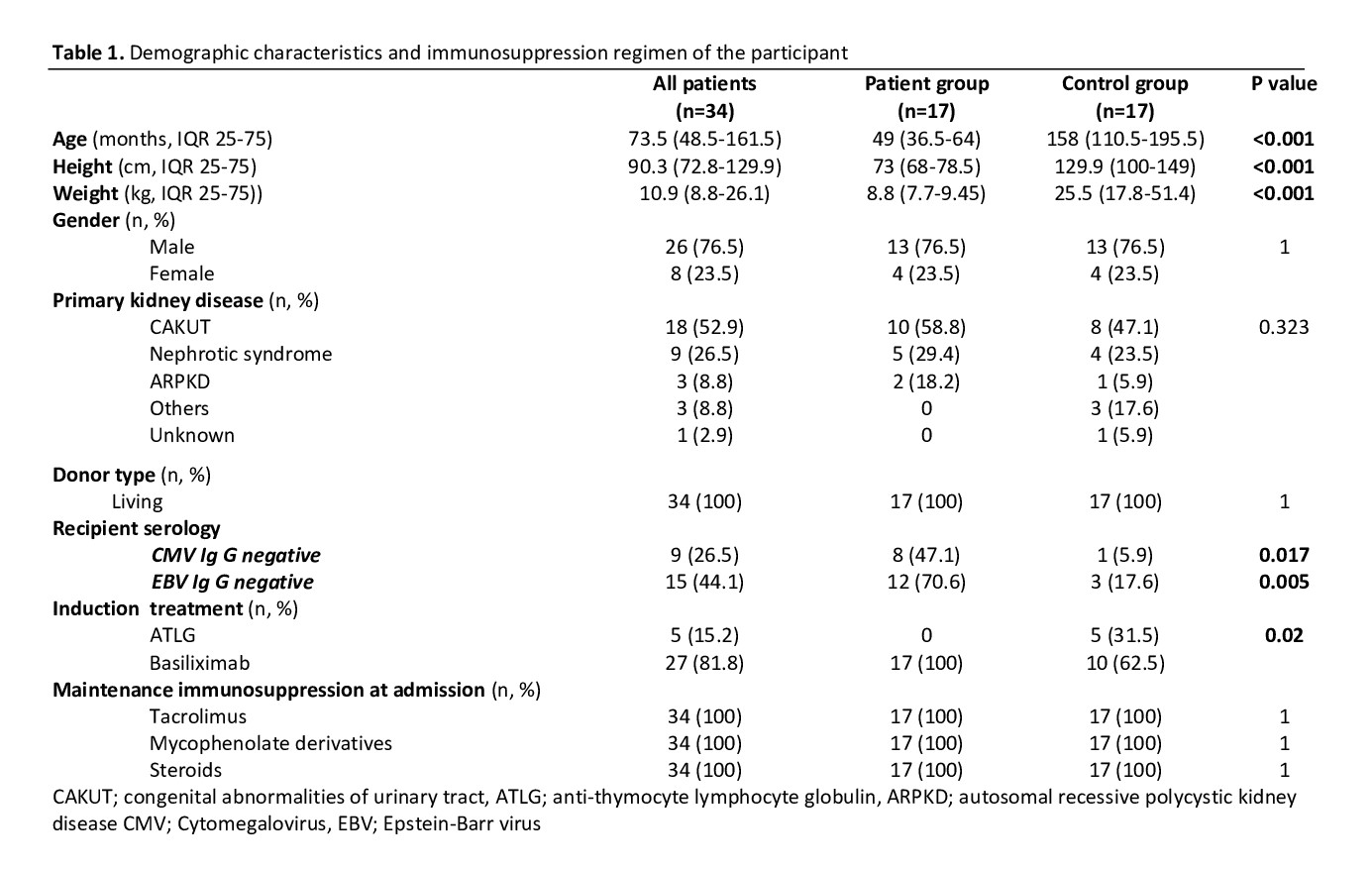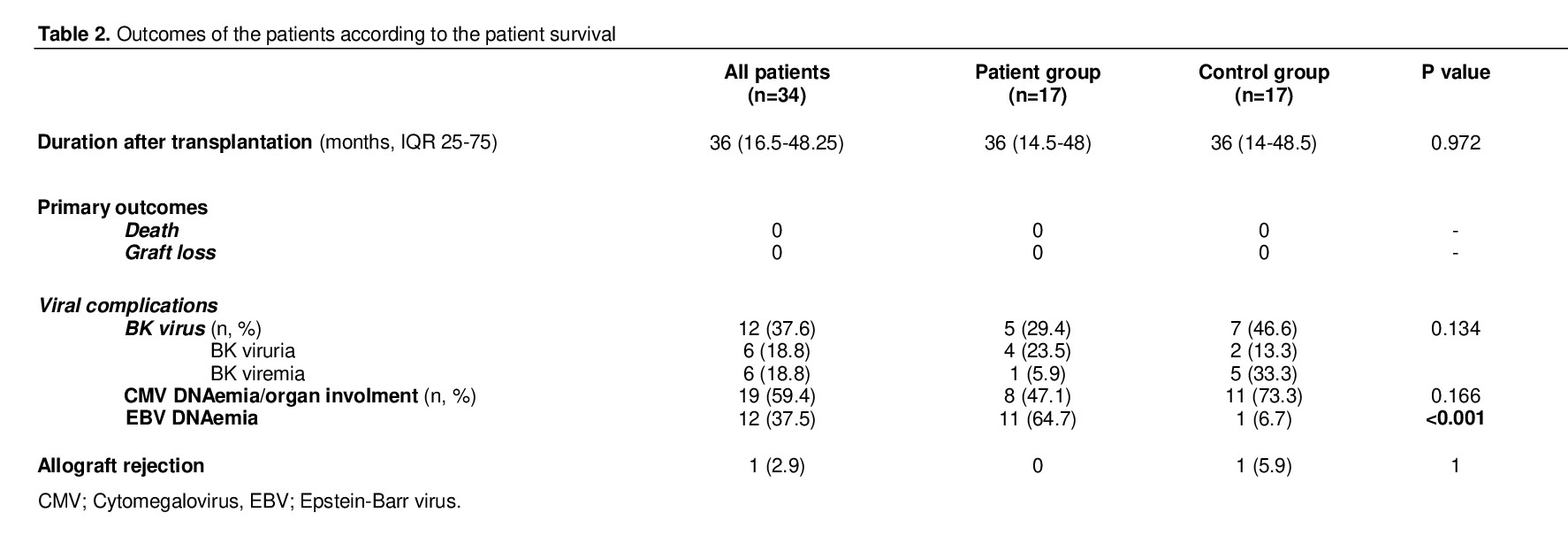Kidney transplantation in children weighing 10 kg or less: Is it a challenge ?
Cemile Pehlivanoglu1, Erol Demir2, Ozlem Unlugedik3, Emre Arpalı4, Basak Akyollu4, Nese Tole1, Burak Kocak4, Caner Süsal2, Ilmay Bilge1.
1Pediatric Nephrology Department, Koç University Faculty of Medicine, Istanbul, Turkey; 2Transplant Immunology Research Center of Excellence, Koç University Faculty of Medicine, Istanbul, Turkey; 3Department of Pediatrics, Koç University Hospital, Istanbul, Turkey; 4Organ Transplantation Center, Koç University Hospital, Istanbul, Turkey
Background: Kidney transplantation (tx), which is considered as the most appropriate treatment for children with end-stage kidney disease, is generally applied in children over 10 kg of body weight. Young children represent the vulnerable population in terms of post-transplant fluid-electrolyte and blood pressure management and immunosuppressive treatment. Infections are a significant risk in these patients and may affect graft survival. We aimed to evaluate the clinical outcomes of transplantation in young children, especially infants weighing less than 10 kg, by comparing them with older children.
Methods: Kidney transplant recipients less than 10 kg were included in this retrospective observational study. This patient group was matched with a pediatric control group in the recipient's sex and post-transplant follow-up by the nearest neighbor matching method. The primary endpoint was all-cause mortality and graft loss. The secondary endpoints were the occurrence of allograft rejection, Cytomegalovirus (CMV), BK virus (BKV), and Ebstein-Barr virus (EBV) infections.
Results: Thirty-four kidney transplant recipients were followed for a median of 36 months after transplantation. Although, there were no statistical differences in both groups in terms of BKV (5 vs. 7; p=0.134), CMV infections (8 vs. 11; p=0.166); EBV DNAemia (11 vs. 1; p<0.001) were common in the patient group than the control group. EBV-related Post tx lymphoproliferative disease (PTLD) occurred in 2 children in the patient group.
Conclusions: The survival rates of infants less than 10 kg were %100 at a median three years follow-up. But the frequency of EBV DNAemia in these patients has increased compared to the other pediatric population. Therefore, close follow-up of these patients is required.


[1] pediatric
[2] kidney transplantation
[3] infants
[4] viral infections
[5] graft survival
[6] patient survival
